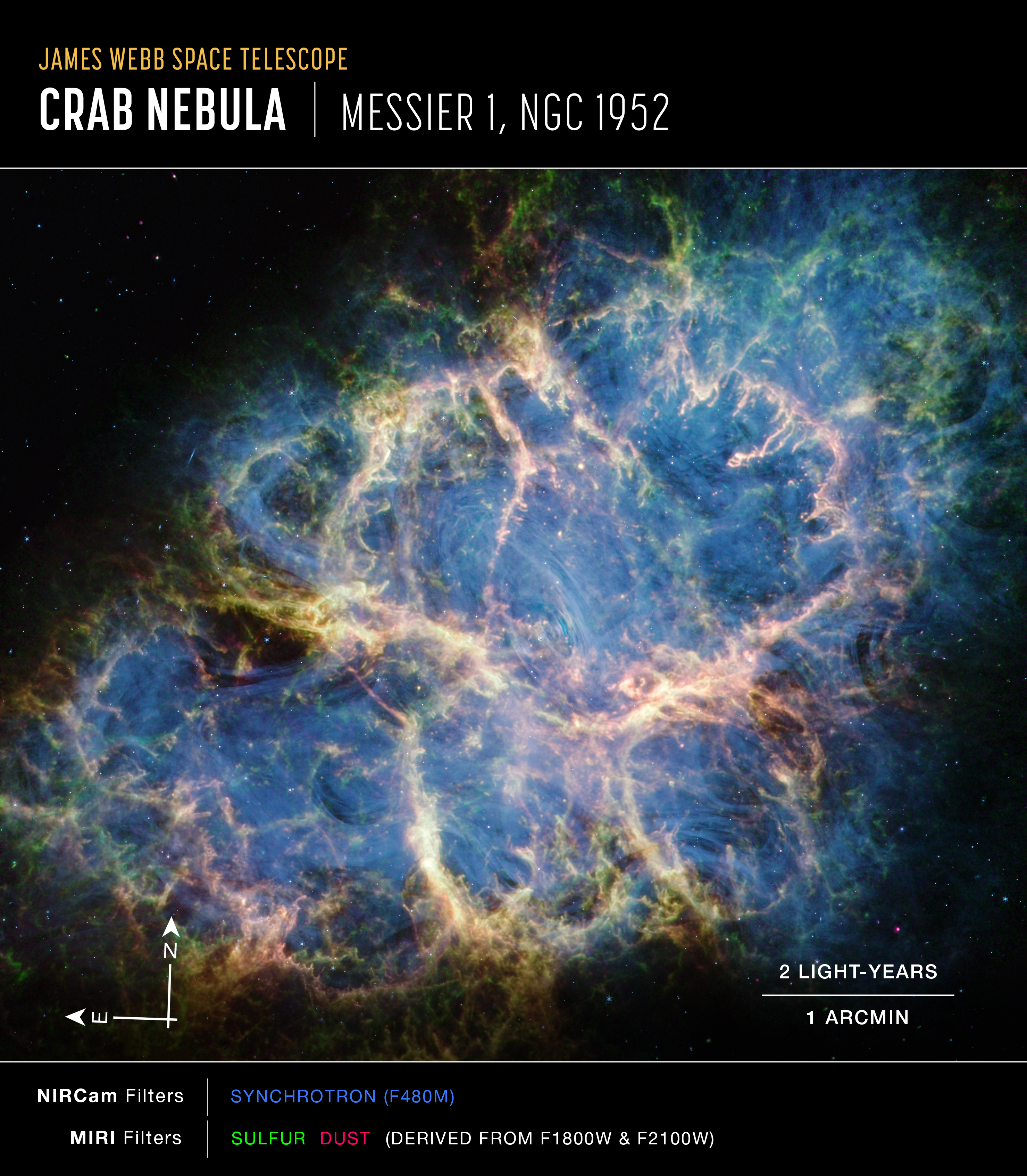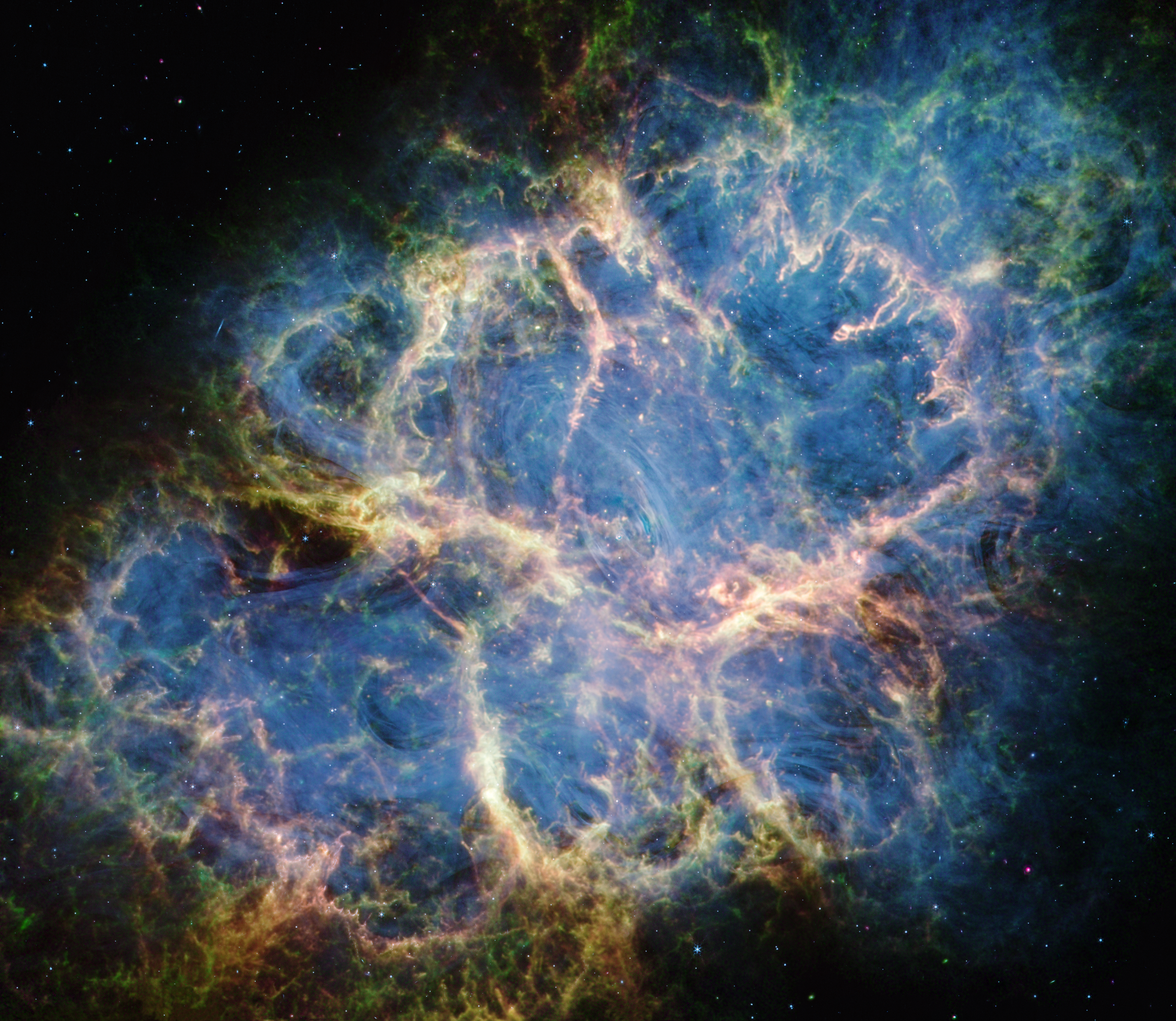1 min read
Crab Nebula Deconstructed
This video shows the different major components that compose the Crab Nebula as observed by the James Webb Space Telescope. Despite decades of study, this supernova remnant continues to puzzle astronomers as they seek to understand what kind of progenitor star and explosion produced this dynamic environment.
A team of scientists used the telescope’s MIRI (Mid-Infrared Instrument) and NIRCam (Near-Infrared Camera) to dissect the nebula’s structure and obtain exceptionally accurate data. Start with a colorful composite image of the Crab Nebula, before viewing some of the major building blocks in isolation: the synchrotron emission (colored blue), dust (magenta), and doubly ionized sulfur (green).
The ghostly synchrotron emission resembles blue wisps of smoke, and is brightest toward the remnant’s center. Thin blue ribbons trace the magnetic field lines created by the Crab’s pulsar heart — a rapidly rotating neutron star.
Dust, represented as fluffy magenta material, forms a cage-like structure that is confined to the interior filaments. Clumps and knots of dust are also dispersed throughout the Crab’s interior.
Doubly ionized sulfur (sulfur III) is shown in green. Though broadly similar to the magenta dust emission map, the distribution of the doubly ionized sulfur is more extended towards the lower left and right portions of the image. Regions where dust and doubly ionized sulfur overlap are yellow-white in the full-color image. This is most notable toward the center where mottled filaments form large loop-like structures.
- Release DateJune 17, 2024
- Science ReleaseInvestigating the Origins of the Crab Nebula With NASA’s Webb
- CreditImage: NASA, ESA, CSA, STScI, Tea Temim (Princeton University); Video: Joseph DePasquale (STScI)
Downloads
Related Images & Videos

Crab Nebula (Compass Image)
Image of the Crab Nebula captured by Webb’s NIRCam and MIRI, with compass arrows, scale bar, and color key for reference. The north and east compass arrows show the orientation of the image on the sky. Note that the relationship between north and east on the sky (as seen from...
Share
Details
Laura Betz
NASA’s Goddard Space Flight Center
Greenbelt, Maryland
laura.e.betz@nasa.gov
NASA, ESA, CSA, STScI, Tea Temim (Princeton University)
Joseph DePasquale (STScI)
































